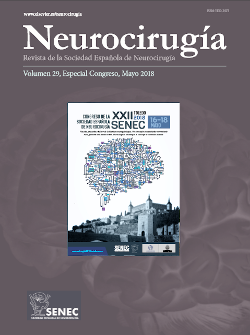C0417 - PROXIMAL BRANCHES OF THE ANTERIOR CEREBRAL ARTERY: ANATOMICAL STUDY AND APPLICATIONS TO ENDOSCOPIC ENDONASAL SURGERY
1UPCM Pittsburgh, PA, USA. 2UPMC, PA, USA.
Objectives: Our aim was to evaluate from an endonasal perspective the anatomical variations of the ACA and its proximal branches, in particular, the recurrent artery of Heubner (RAH), the fronto-orbital (FOA) and the frontopolar (FPA) arteries.
Methods: The origin, course, branching pattern, diameter, and the relationship of the proximal ACA branches with the optic apparatus and the olfactory tract were studied in 25 specimens. Two distinct skull base lesions involving the ACA branches were selected to illustrate the findings.
Results: The RAH was present in all hemispheres and originated within 3.1 ± 1.5 mm of the AcomA, with a mean diameter of 0.44 ± 0.17 mm. Based on its relation with the A1 segment, we observed three types of RAH courses: anterior (40%), superior (22%), and posterior (38%). The FOA was present in all cases and arose mainly from the A2 segment (70%) with a mean distance of 5.9 ± 4 mm from the AcomA. The mean diameter of the FOA was 0.7 ± 0.46 mm. Based on its relation with the olfactory tract, we described three types of FOA courses: in 54% the FOAs crossed its proximal third, in 31% crossed its middle third, and in 15% did not cross the olfactory tract running parallel to it along the gyrus rectus. The FPA was present in 92% of hemispheres and it always arose from the A2 segment, with a mean distance of 10.7 ± 5 mm from the AcomA. It coursed anteriorly within the interhemispheric fissure towards the frontal pole.
Conclusions: The RAH, FOA and FPA can be differentiated according to their origin, course, and final destination. The key landmarks for these three arteries are the A1 segment, the olfactory tract, and the interhemispheric fissure, respectively. A detailed knowledge of the surgical anatomy of the proximal ACA branches from a ventral perspective is essential for performing successful and safe endonasal surgery in the suprasellar-suprachiasmatic region.







